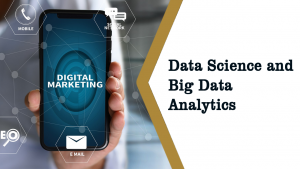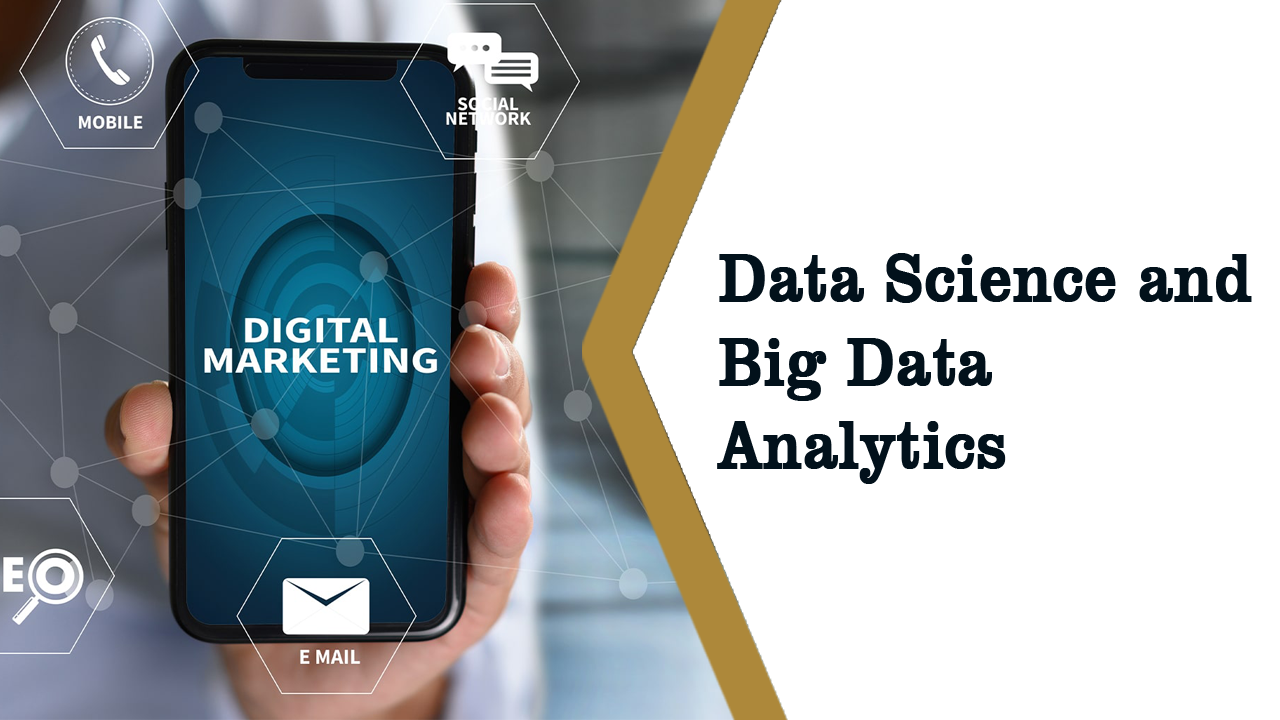Introduction Data Science and Big Data Analytics
In today’s world, data is being generated at an unprecedented rate. Businesses and organizations are inundated with vast amounts of data, and the challenge is how to turn this data into meaningful insights. This is where Data Science and Big Data Analytics come in. In this article, we will explore the relationship between Data Science and Big Data Analytics, and how they are being used to extract value from data. 
What is Data Science?
Data Science is a multidisciplinary field that involves the use of scientific methods, processes, algorithms, and systems to extract insights and knowledge from structured and unstructured data. It combines various fields, such as mathematics, statistics, computer science, and domain expertise, to solve complex problems and make data-driven decisions.
What is Big Data Analytics?
Big Data Analytics is the process of examining large and complex data sets to uncover hidden patterns, correlations, and other insights. It involves using advanced technologies and techniques to process, store, and analyze data. Big Data Analytics helps organizations to make informed decisions, improve operations, and gain a competitive advantage.
How Data Science and Big Data Analytics are Related
Data Science and Big Data Analytics are closely related. Data Science provides the theoretical foundation for Big Data Analytics. It involves developing algorithms, statistical models, and machine learning techniques to analyze data. Big Data Analytics, on the other hand, provides the infrastructure and tools to process and analyze large and complex data sets.
Applications of Data Science and Big Data Analytics
Data Science and Big Data Analytics are being used in a wide range of applications across different industries. For example, in healthcare, they are being used to develop personalized treatments and improve patient outcomes. In finance, they are being used to detect fraud and optimize investment decisions. In retail, they are being used to analyze customer behavior and optimize inventory management.
Data Science and Big Data Analytics Techniques
To extract value from data, Data Science and Big Data Analytics use a range of techniques. These include: – Data Mining: the process of discovering patterns and insights from large data sets. – Machine Learning: the process of using algorithms to learn patterns and insights from
data. – Natural Language Processing (NLP): the process of analyzing and understanding human language. – Predictive Analytics: the process of using statistical models to make predictions about future events. H3: Tools and Technologies Used in Data Science and Big Data Analytics Data Science and Big Data Analytics use a wide range of tools and technologies to process and analyze data. Some of the most commonly used tools include: –
Apache Hadoop: an open-source software framework used for distributed storage and processing of large data sets. – Apache Spark: an open-source distributed computing system used for large-scale data processing. – Python: a programming language widely used in Data Science and Big Data Analytics. – R: a programming language used for statistical computing and graphics.
Challenges in Data Science and Big Data Analytics
Despite the many benefits of Data Science and Big Data Analytics, there are also challenges. One of the biggest challenges is the need for skilled professionals. Data Science and Big Data Analytics require a diverse set of skills, including statistics, machine learning, programming,
and domain expertise. There is currently a shortage of professionals with these skills, making it difficult for organizations to fully leverage the power of data. Another challenge is the need for data privacy and security. With the increasing amount of data being generated, there is a risk of data breaches and cyber attacks. Organizations need to take steps to ensure that their data is secure and that they comply with regulations such as GDPR and HIPAA.
Conclusion
In conclusion, Data Science and Big Data Analytics are powerful tools that can help organizations to
Applications of Data Science and Big Data Analytics
Data science and big data analytics have become pivotal in various sectors, enabling organizations to harness the power of vast and complex data sets. By leveraging advanced analytical techniques, businesses can gain valuable insights, drive strategic decisions, and foster innovation. This article explores the diverse applications of data science and big data analytics across multiple industries, showcasing their transformative impact.
1. Healthcare
Overview: In healthcare, data science and big data analytics are revolutionizing patient care, medical research, and operational efficiency.
Applications:
- Personalized Medicine: By analyzing genetic, environmental, and lifestyle data, healthcare providers can tailor treatments to individual patients, enhancing treatment efficacy and reducing adverse effects.
- Predictive Analytics: Forecasting disease outbreaks, patient admissions, and potential health risks enables proactive intervention and resource management.
- Drug Discovery: Big data accelerates the discovery of new drugs and the development of clinical trials by analyzing vast datasets to identify promising drug candidates and optimize trial designs.
Example: IBM Watson Health uses data analytics to assist in diagnosing diseases and suggesting treatment options based on comprehensive analysis of medical literature and patient data.
2. Retail
Overview: Retailers leverage data science and big data analytics to enhance customer experiences, optimize inventory, and drive sales.
Applications:
- Personalized Recommendations: Analyzing customer behavior and purchase history to provide tailored product recommendations and targeted marketing campaigns.
- Inventory Management: Forecasting demand and optimizing stock levels to reduce overstock and stockouts, improving supply chain efficiency.
- Customer Segmentation: Identifying distinct customer segments and tailoring marketing strategies to increase engagement and loyalty.
Example: Amazon’s recommendation engine uses machine learning algorithms to analyze customer data and suggest products that align with users’ preferences and past behaviors.
3. Finance
Overview: In the financial sector, data science and big data analytics are employed to manage risks, detect fraud, and optimize investment strategies.
Applications:
- Fraud Detection: Analyzing transaction patterns to identify and prevent fraudulent activities in real-time.
- Risk Management: Assessing and predicting financial risks by analyzing market trends, economic indicators, and historical data.
- Algorithmic Trading: Using advanced analytics to develop trading algorithms that analyze market data and execute trades at optimal times.
Example: JPMorgan Chase utilizes big data analytics to detect unusual transaction patterns and potential fraud, enhancing the security of financial transactions.
4. Marketing
Overview: Data science and big data analytics enable marketers to understand consumer behavior, optimize campaigns, and measure effectiveness.
Applications:
- Customer Insights: Analyzing data from various sources to gain a comprehensive understanding of customer preferences, behaviors, and buying patterns.
- Campaign Optimization: Tracking and analyzing the performance of marketing campaigns to optimize strategies and improve return on investment (ROI).
- Social Media Analysis: Monitoring social media activity to gauge brand sentiment, identify trends, and engage with customers effectively.
Example: Coca-Cola uses big data analytics to monitor social media conversations and consumer feedback, allowing them to tailor marketing campaigns and product offerings.
5. Transportation and Logistics
Overview: The transportation and logistics industries utilize data science and big data analytics to optimize routes, improve safety, and enhance operational efficiency.
Applications:
- Route Optimization: Analyzing traffic patterns and real-time data to determine the most efficient routes and reduce fuel consumption.
- Fleet Management: Monitoring vehicle performance and driver behavior to improve maintenance schedules and operational efficiency.
- Demand Forecasting: Predicting demand for transportation services to optimize resource allocation and reduce costs.
Example: UPS uses data analytics to optimize delivery routes, reducing fuel consumption and improving delivery efficiency.
6. Energy
Overview: In the energy sector, data science and big data analytics are applied to optimize resource management, improve operational efficiency, and enhance predictive maintenance.
Applications:
- Predictive Maintenance: Analyzing data from sensors and equipment to predict and prevent potential failures, reducing downtime and maintenance costs.
- Energy Consumption Analysis: Monitoring and analyzing energy usage patterns to optimize consumption and reduce costs.
- Renewable Energy Management: Forecasting energy production from renewable sources and integrating it into the energy grid to ensure stability and efficiency.
Example: General Electric (GE) uses data analytics to monitor the performance of wind turbines, predicting maintenance needs and optimizing energy production.
7. Manufacturing
Overview: Data science and big data analytics enhance manufacturing processes by improving quality control, optimizing production, and predicting maintenance needs.
Applications:
- Quality Control: Analyzing data from production processes to identify defects and ensure product quality.
- Production Optimization: Monitoring and analyzing production data to optimize processes, reduce waste, and improve efficiency.
- Predictive Maintenance: Using data from machinery to predict failures and schedule maintenance, reducing downtime and operational costs.
Example: Siemens uses big data analytics to monitor manufacturing equipment in real-time, enabling predictive maintenance and improving production efficiency.
8. Education
Overview: Data science and big data analytics are transforming education by personalizing learning experiences, improving administrative processes, and enhancing educational outcomes.
Applications:
- Personalized Learning: Analyzing student data to tailor educational content and teaching methods to individual learning styles and needs.
- Student Performance Analysis: Tracking and analyzing academic performance to identify at-risk students and provide targeted support.
- Operational Efficiency: Optimizing administrative processes and resource allocation based on data-driven insights.
Example: Coursera uses data analytics to personalize course recommendations and improve the learning experience for students based on their behavior and preferences.
9. Telecommunications
Overview: The telecommunications industry leverages data science and big data analytics to optimize network performance, improve customer service, and drive innovation.
Applications:
- Network Optimization: Analyzing network data to improve performance, reduce downtime, and enhance user experience.
- Customer Churn Prediction: Identifying customers at risk of leaving and implementing retention strategies based on behavioral data.
- Fraud Detection: Monitoring network usage to detect and prevent fraudulent activities.
Example: Verizon uses big data analytics to optimize network performance and address customer service issues proactively.
10. Government
Overview: Government agencies utilize data science and big data analytics to enhance public services, improve decision-making, and drive policy development.
Applications:
- Public Safety: Analyzing crime data to identify trends, allocate resources effectively, and enhance public safety.
- Urban Planning: Using data to inform city planning and infrastructure development, improving quality of life for residents.
- Policy Analysis: Evaluating the impact of policies and programs using data-driven insights to guide decision-making.
Example: New York City uses data analytics to improve transportation planning, enhance public safety, and optimize city services.
Conclusion
The applications of data science and big data analytics span across various industries, driving innovation, efficiency, and strategic decision-making. From personalized medicine and predictive maintenance to marketing optimization and public safety, the potential of data-driven insights is vast and transformative. As technology continues to advance, the ability to leverage big data will become increasingly critical in shaping the future of industries and enhancing the quality of services and outcomes.
